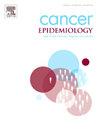Spatiotemporal analysis of lung cancer mortality in Spain
IF 2.4
3区 医学
Q3 ONCOLOGY
引用次数: 0
Abstract
Background
Lung cancer is the leading cause of cancer-related mortality in Spain. This study aims to analyze the spatiotemporal pattern of lung cancer mortality in Spain and to discuss the role of potential risk factors.
Methods
A spatiotemporal study of lung cancer mortality was conducted in Spain. Moran’s I index and Local Indicators of Spatial Association (LISA) were utilized to identify spatial clustering. Bivariate spatial associations and multivariate regression models were applied to examine the association between lung cancer mortality, population density, mining activity, and average income per capita.
Results
A total of 81.8 % of lung cancer deaths occurred in males, though there is a rising trend in deaths among females. There are low-mortality clusters mainly concentrated in inland areas of the peninsula and in the northern half of the country, while high-mortality clusters are distributed heterogeneously and, in some regions, follow the course of the rivers. Municipal-level association analysis shows a direct relationship with population density and, among individuals aged 65 and older, with mining activity; however, it reveals an inverse relationship with average income per capita.
Conclusion
A better understanding of the spatiotemporal behavior of lung cancer mortality and its associated risk factors could be useful for primary prevention efforts and healthcare planning.
求助全文
约1分钟内获得全文
求助全文
来源期刊

Cancer Epidemiology
医学-肿瘤学
CiteScore
4.50
自引率
3.80%
发文量
200
审稿时长
39 days
期刊介绍:
Cancer Epidemiology is dedicated to increasing understanding about cancer causes, prevention and control. The scope of the journal embraces all aspects of cancer epidemiology including:
• Descriptive epidemiology
• Studies of risk factors for disease initiation, development and prognosis
• Screening and early detection
• Prevention and control
• Methodological issues
The journal publishes original research articles (full length and short reports), systematic reviews and meta-analyses, editorials, commentaries and letters to the editor commenting on previously published research.
 求助内容:
求助内容: 应助结果提醒方式:
应助结果提醒方式:


